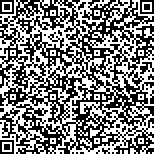| 引用本文: | 周彤,梁艺瑶,谢颖,苏雪蓉,吴杨倩,万毅,许金国,赵晓莉*,王超*.基于指纹图谱及网络药理学探究胃宁散抗胃溃疡药效关联物质及作用机制[J].中国现代应用药学,2024,41(7):895-905. |
| ZHOU Tong,LIANG Yiyao,XIE Ying,SU Xuerong,WU Yangqian,WAN Yi,XU Jinguo,ZHAO Xiaoli*,WANG Chao*.Exploring the Related Substances and Mechanisms of Weining San's Anti Gastric Ulcer Efficacy Based on Fingerprint and Network Pharmacology[J].Chin J Mod Appl Pharm(中国现代应用药学),2024,41(7):895-905. |
|
| |
|
|
| 本文已被:浏览 819次 下载 577次 |

码上扫一扫! |
|
|
| 基于指纹图谱及网络药理学探究胃宁散抗胃溃疡药效关联物质及作用机制 |
|
周彤1, 梁艺瑶1, 谢颖1, 苏雪蓉1, 吴杨倩1, 万毅1, 许金国1, 赵晓莉*1, 王超*2
|
|
1.南京中医药大学药学院,南京 210023;2.南京中医药大学附属医院,南京 210029
|
|
| 摘要: |
| 目的 根据指纹图谱及网络药理学探讨胃宁散(Weining San,WNS)抗胃溃疡(gastric ulcer,GU)的药效关联物质及作用机制。方法 采用HPLC建立12批WNS指纹图谱,并进行方法学考察,结合对照品指认特征峰,筛选药效关联物质,进行网络药理学分析。利用TCMIP、Swiss Target Prediction数据库检索成分靶点;利用OMIM、GeneCards和Drugbank数据库检索GU疾病靶点,取成分与疾病的交集靶点,采用String数据库构建蛋白质-蛋白质相互作用网络图,并进行拓扑学参数分析;采用Cytoscape 3.8.2软件构建“成分-疾病-靶点”网络图;采用Metascape网站对交集靶点进行GO和KEGG富集分析。随后采用灌胃无水乙醇的方式建立酒精性GU小鼠模型,对网络药理学预测的结果进行验证。结果 HPLC指纹图谱方法学考察的精密度、稳定性、重复性均良好。经对照品比对及综合分析,确定三七皂苷R1、人参皂苷Rg1、1,4-二[4-(葡萄糖氧)苄基]-2-异丁基苹果酸酯、人参皂苷Rb1、五味子醇甲、五味子醇乙、五味子甲素、五味子酯甲为WNS中的药效关联物质,其可能通过调控AKT1、IL-6、STAT3、TNF、IL1B等核心靶点及PI3K-Akt、JAK-STAT等关键信号通路来发挥作用。小鼠胃溃疡指数和溃疡抑制率测定、HE染色观察结果显示,WNS对GU小鼠胃黏膜损伤有良好的改善作用。ELISA、WST-1及TBA测定结果表明,WNS干预后能降低模型小鼠TNF-α、IL-6、IL-1β、MDA水平,升高SOD、PGE2水平,提示WNS抗GU作用与抑制炎症反应与氧化应激机制相关,进一步验证了网络药理学预测的结果。结论 本研究结合指纹图谱、网络药理学及动物实验验证,对WNS抗GU药效关联物质及作用机制进行了探讨,为WNS的质量控制及临床研究提供参考。 |
| 关键词: 胃宁散 指纹图谱 网络药理学 胃溃疡 |
| DOI:10.13748/j.cnki.issn1007-7693.20232446 |
| 分类号:R285.5 |
| 基金项目:国家重点研发计划项目(2018YFC1707000) |
|
| Exploring the Related Substances and Mechanisms of Weining San's Anti Gastric Ulcer Efficacy Based on Fingerprint and Network Pharmacology |
|
ZHOU Tong1, LIANG Yiyao1, XIE Ying1, SU Xuerong1, WU Yangqian1, WAN Yi1, XU Jinguo1, ZHAO Xiaoli*1, WANG Chao*2
|
|
1.School of Pharmacy, Nanjing University of Chinese Medicine, Nanjing 210023, China;2.Affiliated Hospital of Nanjing University of Chinese Medicine, Nanjing 210029, China
|
| Abstract: |
| OBJECTIVE To explore the pharmacodynamic related substances and mechanism of Weining San(WNS) against gastric ulcer(GU) according to fingerprint and network pharmacology. METHODS Twelve batches of WNS fingerprints were established by HPLC, and methodological investigation was carried out. Combined with reference substances, characteristic peaks were identified, pharmacodynamic related substances were screened, and network pharmacological analysis was carried out. Using TCMIP and Swiss Target Prediction database to retrieve component targets; Using OMIM, GeneCards and Drugbank databases to retrieve GU disease targets, taking the intersection targets of components and diseases, using String database to construct protein-protein interaction network diagram, and analyzing topological parameters; Using Cytoscape 3.8.2 software to construct "component-disease-target" network diagram; GO and KEGG enrichment analysis of intersection targets were carried out by Metascape website. Then the alcoholic GU mouse model was established by intragastric administration of absolute ethanol to verify the results of network pharmacology prediction. RESUITS The precision, stability and repeatability of HPLC fingerprint method were good. By comparison and comprehensive analysis of control substances, notoginsenoside R1, ginsenoside Rg1, militarine, ginsenoside Rb1, schisandrin, schisandrol B, deoxyschizandrin and schisantherin A were identified as pharmacodynamic related substances in WNS, which may play their role by regulating core targets such as AKT1, IL-6, STAT3, TNF, IL1B and key signal pathways such as PI3K-Akt and JAK-STAT. The gastric ulcer index, ulcer inhibition rate and HE staining showed that WNS could improve gastric mucosal injury in GU mice. The results of ELISA, WST-1 and TBA showed that WNS could decrease the levels of TNF-α, IL-6, IL-1β and MDA, and increase the levels of SOD and PGE2, suggesting that the anti-GU effect of WNS was related to the inhibition of inflammatory reaction and oxidative stress mechanism, which further verified the prediction of network pharmacology. CONCLUSION This study combines fingerprint analysis, network pharmacology, and animal experimental validation to explore the pharmacodynamic related substances and mechanisms of WNS anti-GU efficacy, providing reference for quality control and clinical research of WNS. |
| Key words: Weining San fingerprint network pharmacology gastric ulcer |
|
|
|
|
